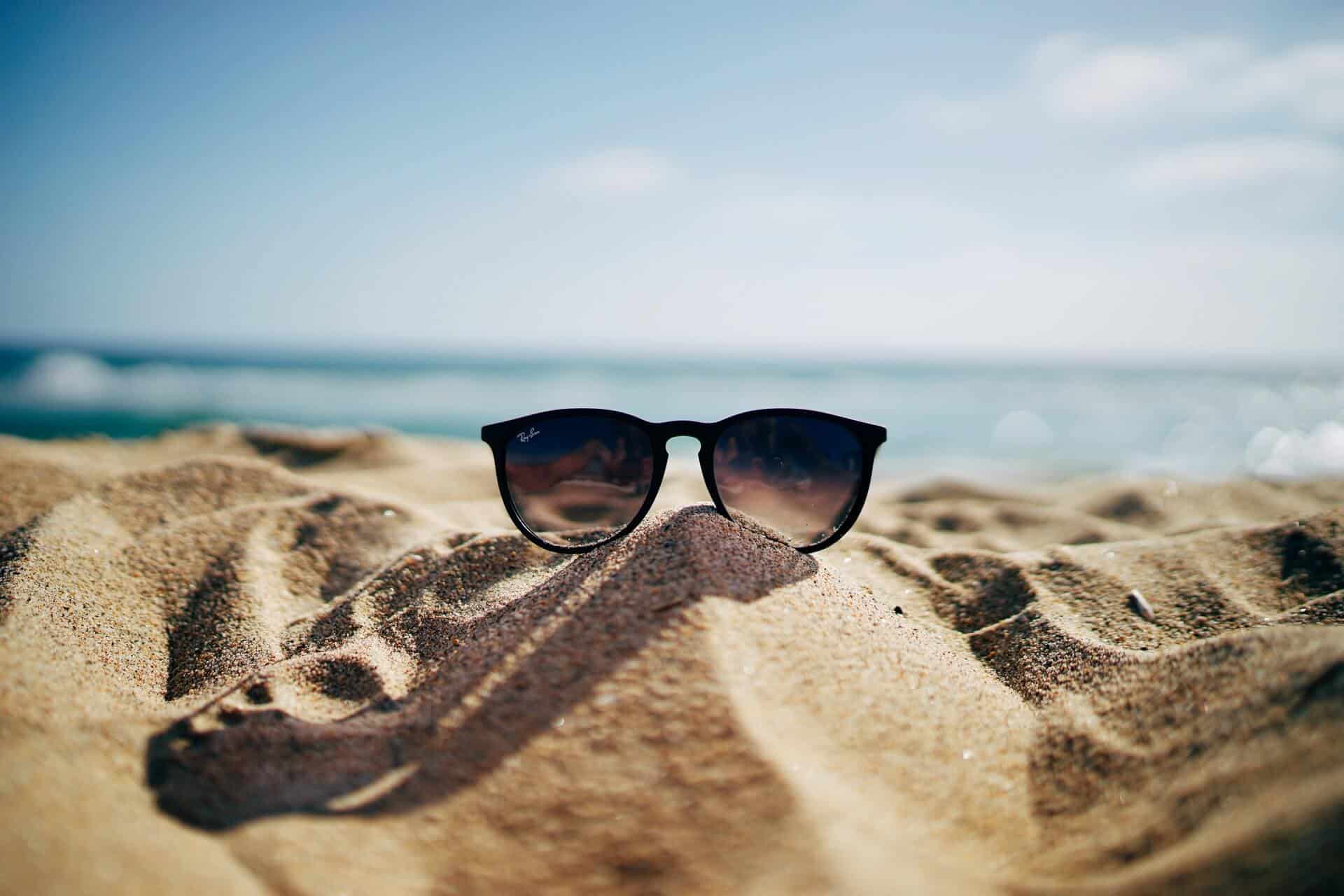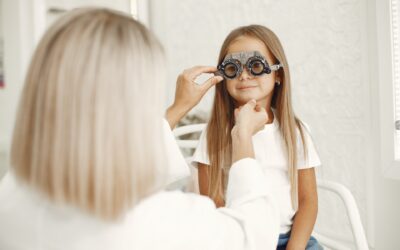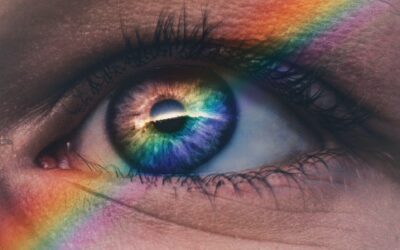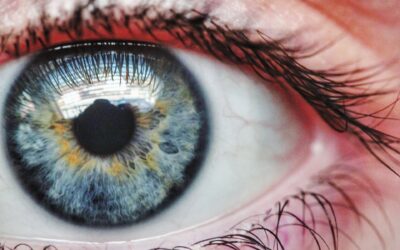When it comes to the eyes—we only get two! Therefore we need to do our best to take care of the eyes we have.
One of the major culprits of eye damage is the sun. It’s something that is unavoidable, and therefore it is best to understand how to prepare and prevent as much sun damage as possible.
What Exactly Does the Sun Do to the Eye?
The sun emits UV light, specifically UV-A, UV-B, and UV-C.
UV-C light is the most dangerous and is typically blocked by the ozone layer. UV-A and UV-B, however, are ably to freely pass through the atmosphere and can penetrate through the skin and also the eyes.
We all have heard about how dangerous UV light sources are to the skin with the uprise in skin cancer cases. Therefore, we now know how important it is to wear sunscreen when going outdoors.
What is not commonly discussed, however, is that these harmful sunrays can pass into the eye even easier and cause just as harmful damage to the eyes as it does to the skin.
What is it about UV light that is so harmful to our bodies? A process called oxidative stress is the main culprit.
The sun is good in moderation, in general our bodies are able to take the UV light and break it down into useful, non-harmful components through a physiological process called oxidation. In the oxidation process, free radicals are broken down prior to entering cells and causing harm.
However, when we are exposed to too much UV light and the body is no longer able to keep up with the oxidation process, it undergoes oxidative stress and free radicals build up within the cells, causing irreversible damage.
Oxidative stress is one of the causes of cataract development as it causes the normally well–organized cells of the lens of the eye to become disorganized. When the cells of the lens become disorganized the lens of the eye becomes hazy, cloudy, and yellow in color as the cells begin to break down.
These findings are all characteristics of cataracts.
While cataracts can develop as part of natural aging, we are finding that excessive sun exposure has been linked to early cataract development as well as more dense and advanced cataract development.
Cataracts typically do not begin to cause problems in individuals until they reach the age of 65 or older. However, with more exposure to UV light it is hypothesized that we will begin to see this age of cataract formation begin to become younger and younger.
Other ways UV light can damage the eye include creation of a pinguecula or pterygium (yellow thickened growths on the conjunctiva of the eye), UV keratitis, and macular degeneration (a progressive disease affecting the backmost structure of the eye called the retina).
How Can the Eye Protect Itself Against UV Light?
The eye has several mechanisms to protect itself against UV light. The main mechanisms are that the cornea, lens, and vitreous humor can all absorb UV light to prevent it from reaching the retina.
If too much UV light reaches the retina, it causes irreversible damage and death of light-detecting cells called photoreceptors. When this occurs, an individual can develop macular degeneration (death and destruction of the part of the retina responsible for our 20/20 vision) and even permanent vision loss.
Hence, the eye wants to have as many protective measures in place as possible to prevent UV light from ever even reaching the retina!
The cornea, lens, and vitreous humor, however, all have their breaking points and can only absorb so much at a time before losing the structural integrity.
If too much UV exposure occurs to the cornea, a person can develop UV Keratitis (also known as Welder’s Keratitis or Photokeratitis).
This is a very painful non-infectious inflammation of the cornea (very front structure of the eye) that appears 8-12 hours after excessive exposure to UV light. It is seen most commonly after skiing (UV light is reflected off snow, thus amplifying the amount of UV that reaches the eye), Welding, or spending time on water without sun protection.
Think about UV Keratitis almost as a sunburn on the eye. However, since the cornea has the most concentrated amount of nerves in the human body, it is like an extremely amplified sunburn.
If too much UV is absorbed by the lens, it creates a more chronic problem rather than just “sunburn”. Over time the UV absorption causes oxidative stress and cell denaturing of the lens cells—hence creating cataracts.
Another important protective mechanism the eye has against UV light is that it turns slightly yellow with age due to accumulation of vitamins zeaxanthin and lutein. These two vitamins are known to protect against oxidative stress, and therefore act as extra UV absorbers in the eye.
In short, we want high amounts of zeaxanthin and lutein in the eyes. Unfortunately, we do not reach adult levels of these vitamins until around the age of 20 years old.
This means that those under the age of 20 have a weaker defense mechanism against UV light and therefore are at an even higher risk of saturating the lens of the eye with UV and therefore developing cataracts earlier on in life.
In other words, the younger you are, the more important it is to protect your eyes against UV light to prevent serious damage from occurring to the eyes.
UV damage is something that accumulates over time to cause big problems—we do not want to accumulate an excessive amount before our eyes have even matured enough to defend against the UV particles!
Other Sources of Harmful UV Light
UV light is emitted from sources besides just the sun, too.
One of the most important ones to note is that electronic screens emit UV-B light. While we do not have enough research to state exactly what UV-B light from electronic screens does to the eyes, it is hypothesized that excessive screen time could result in early onset cataracts.
This is especially true with young children with excessive screen time as their eyes have not yet completely developed their UV protection mechanisms.
Other sources of UV light include tanning beds, black lights, fluorescent lights, lasers, and UV sanitizing lights.
While these sources all emit small amounts of UV light—very minimal in comparison to the sun—excessive use of them can accumulate to be large amounts of UV light absorbed by the body.
What Can I Do to Protect my Eyes from UV Light?
Ultimately, UV light exposure is impossible to avoid. UV light is a good thing in moderation, we just need to limit how much we are getting.
It is always a good thing to wear sunscreen when going outdoors. This includes on the face and eyelids too! Be sure to pick up a sunscreen that is safe for the face as the skin of the face and eyelids is a bit more fragile than on the rest of the body.
Wearing sunglasses when going outdoors is also important—especially for kids! Look for sunglasses with the UV protectant sticker on them.
Sunglasses are particularly important when going outdoors for extended periods of time, and when being around water, sand, or snow as all of these elements are known to reflect light and thus increase the amount of UV light being absorbed by the body.
Another way to protect your eyes from the sun is by wearing a billed hat such as a baseball cap, wide-brimmed sunhat, or bucket hat to keep the eyes shaded from directly overhead sunlight.
Blue light filters on glasses are also a good idea if you or your child use electronics for more than 1 hour a day. This includes computers, tablets, cell phones, and TVs.
The thing that is tricky about UV light and the eyes is that you do not necessarily feel pain from UV accumulation.
UV light causes gradual changes over time that builds up to cause a big issue. Having good prevention methods to protect your eyes against UV damage is the best way to keep your eyes strong and healthy for years to come!





